Circle Garden Design Ideas: Creative Ways to Transform Your Space
Thinking about adding some charm and efficiency to your garden? Circle garden designs are a wonderful way to enhance both the appearance and functionality of your outdoor space. They offer a unique and stylish alternative to traditional garden layouts.
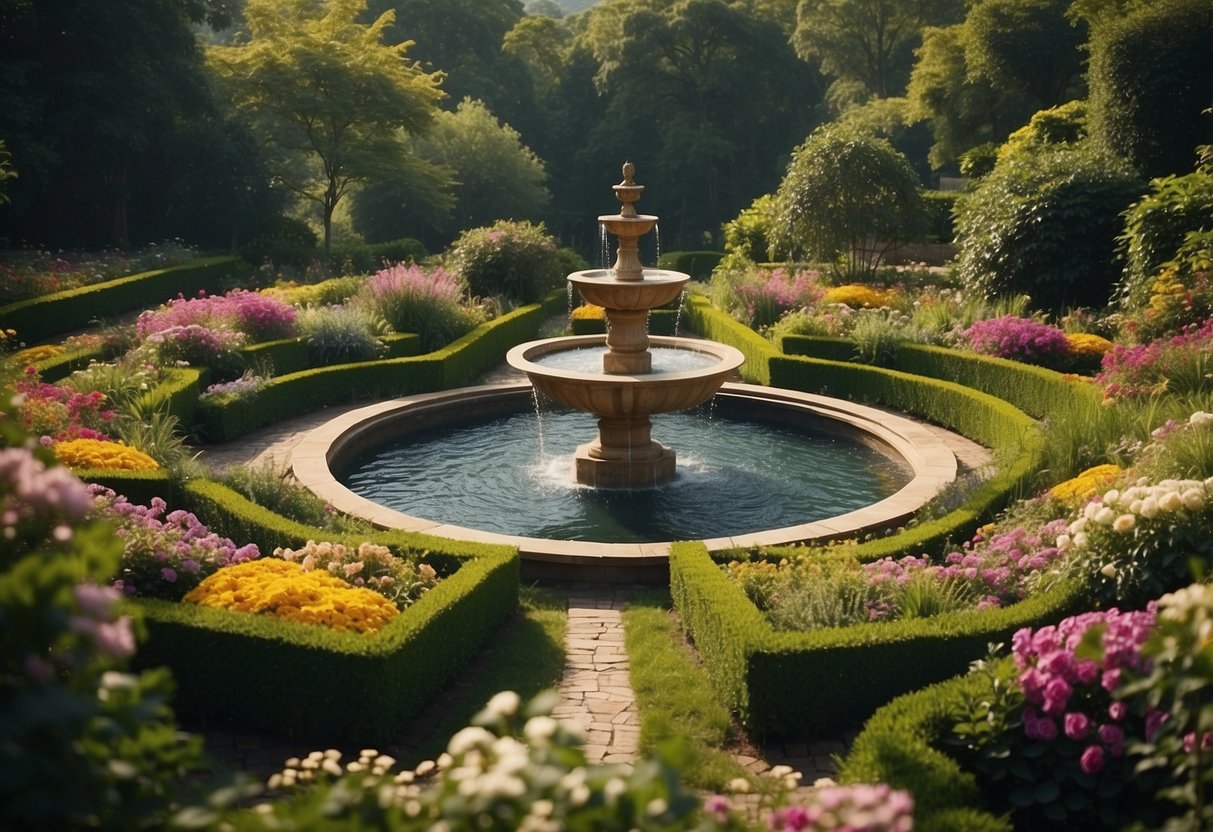
What makes circle gardens special is their ability to create a sense of balance and harmony. You’ll find that using circular shapes can make your garden feel more inviting and organized. Whether you have a small backyard or a larger area, circle garden designs can fit any space and style.
1) Circular Herb Spiral

A circular herb spiral is a unique and space-saving garden design. It uses stones or bricks to create a spiral shape that rises from the ground.
This design allows you to plant different herbs with varying water and sunlight needs.
It provides an attractive, functional solution for small spaces and adds a focal point to your garden.
2) Fairy Ring Flower Bed

A fairy ring flower bed adds a magical touch to your garden.
Start by planting small flowers in a perfect circle.
Add a focal point like a fairy house in the center.
Use tiny plants or even miniature accessories to enhance the theme.
Be sure to include plants that do well in your climate so they thrive year-round.
Create pathways using small pebbles or moss for added detail.
Maintain with regular watering and care.
For more ideas, check out these DIY fairy garden ideas.
3) Pebble Stone Central Feature
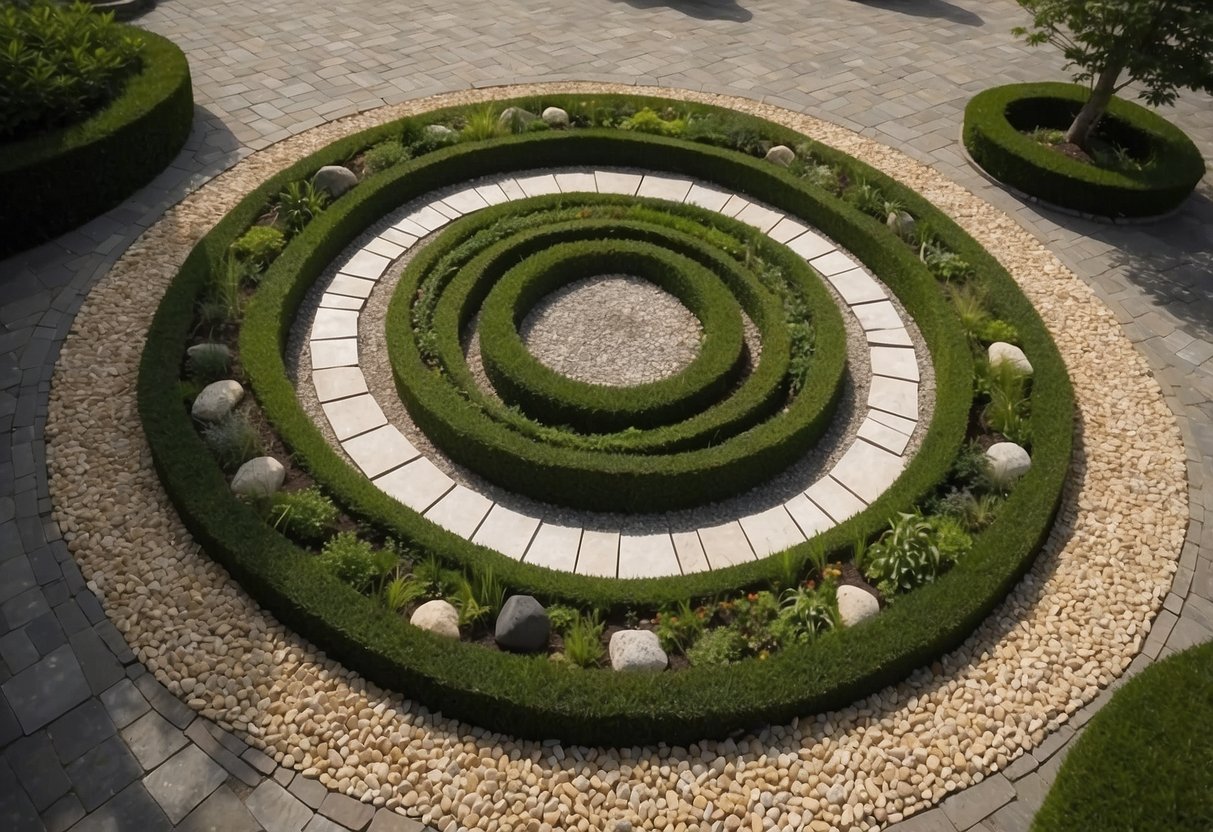
You can create a peaceful focal point in your circle garden with a pebble stone feature. Arrange pebbles in a circular pattern, using larger stones in the center for added visual interest.
Add different colors and sizes of pebbles to bring texture and contrast. Pair with small ornamental grasses or succulents along the edge for a natural look.
4) Round Pergola Seating

A round pergola creates a charming focal point in your garden. It offers a cozy space for relaxation.
You can arrange seating in a circle around a table or fire pit. This setup encourages conversation and togetherness.
Using wood or metal can add style and durability. Add cushions and throws to enhance comfort.
Consider adding a circular patio beneath your pergola. This defines the area and complements the design.
5) Circular Vegetable Patch

Creating a circular vegetable patch adds a unique touch to your garden. Start by choosing a sunny spot in your yard.
Next, divide the circle into sectors. Each sector can host different veggies like tomatoes, lettuce, or carrots, ensuring a mix of colors and heights.
Use a hose or string to outline the circle. This helps you visualize the layout before planting. Don’t forget to rotate your crops each season to maintain soil health and maximize your harvest. For more tips, check out this guide on garden design. Happy gardening!
6) Pond with Circular Deck
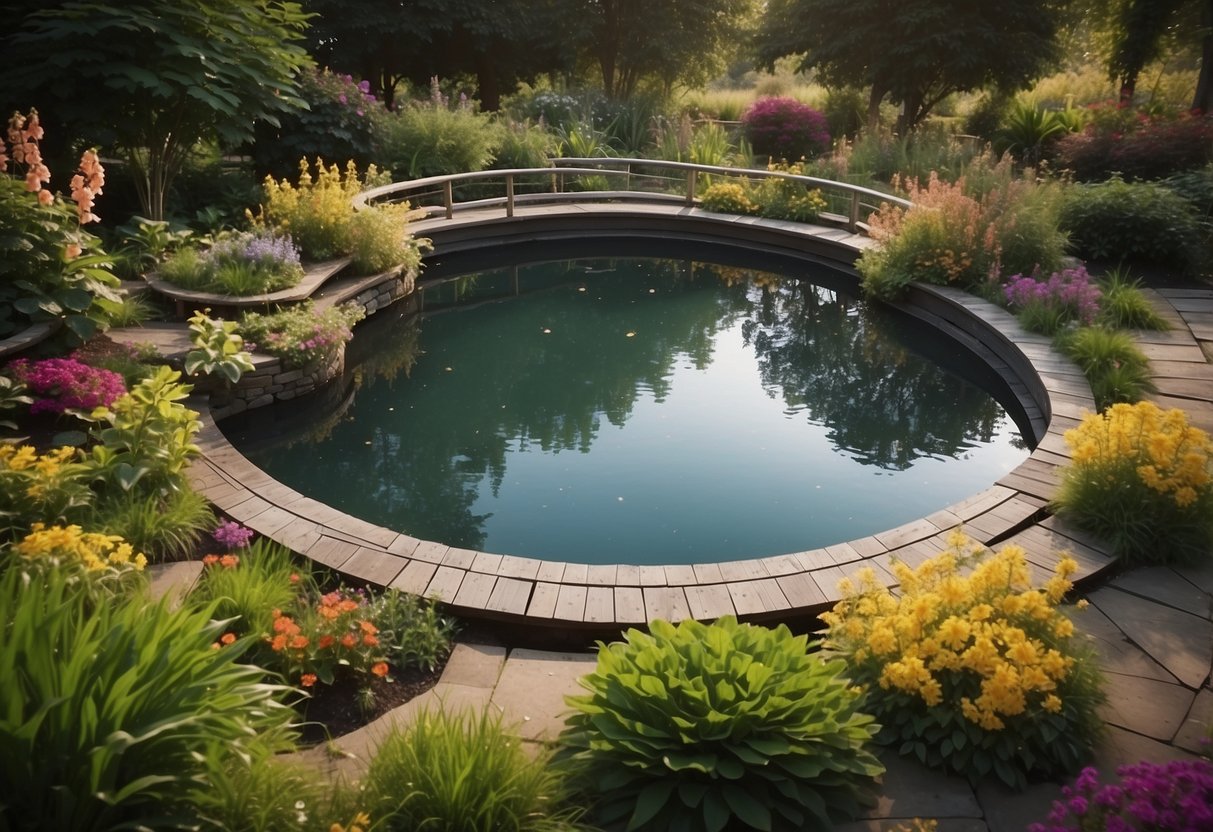
A pond with a circular deck can be a charming focal point in your garden. The round shape makes the area feel cozy and inviting.
You can use natural wood or composite decking materials. The deck can be used for seating, creating a serene spot to relax.
Adding water plants around the pond can enhance its beauty. Fish can also bring life and movement to the water. Check out more ideas at Garden Therapy.
7) Raised Brick Circle Garden

A raised brick circle garden offers a classic and elegant look. You can use old or new bricks for this type of garden bed.
It’s simple to build and adds height to your garden, making it easier to plant and maintain.
Arrange the bricks in a circular shape and fill the center with soil. This design is perfect for growing flowers, herbs, or vegetables. Using bricks also provides good drainage and keeps the soil warm.
For more ideas on raised garden beds, check out this guide.
8) Radial Planting Pattern
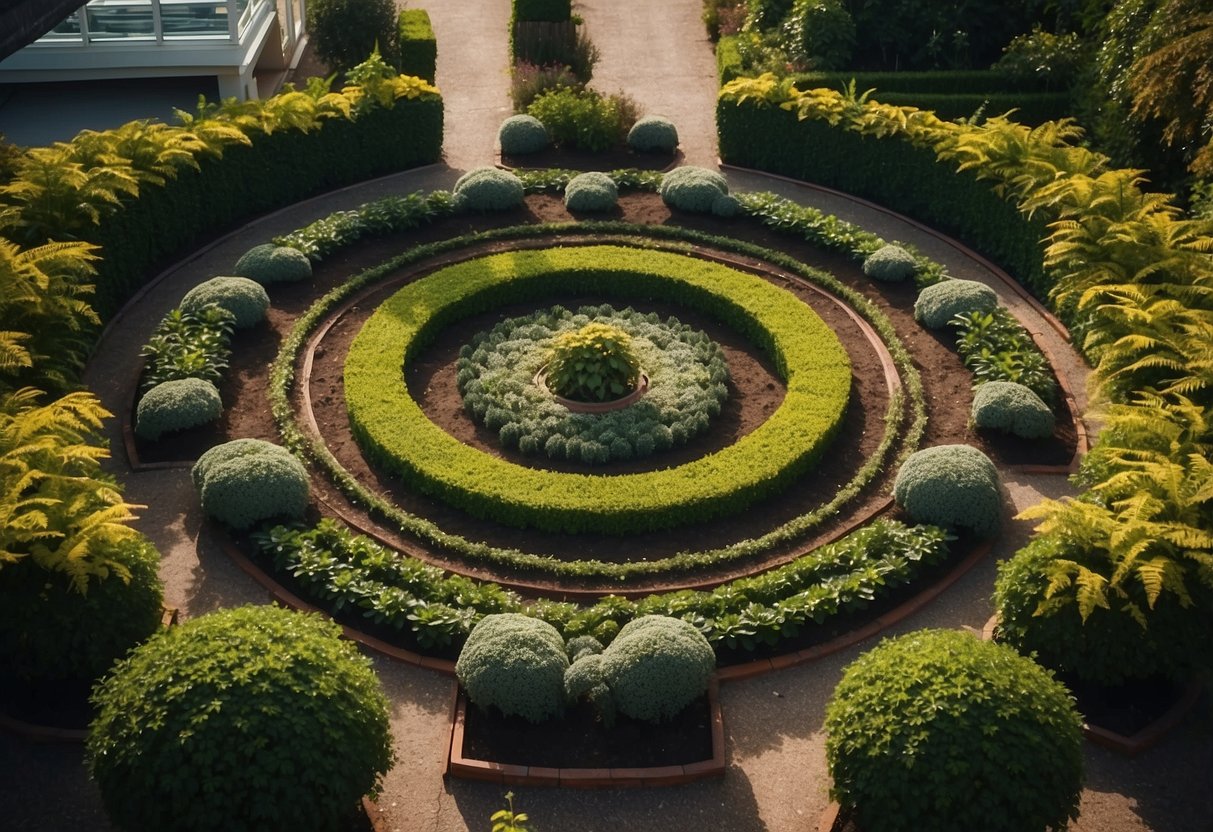
A radial planting pattern is a great way to create a visually appealing garden.
In this design, plants are arranged in radial lines from a central point. This layout draws the eye outward and gives a balanced look to your garden.
Using this pattern helps you easily section different types of plants, making care and maintenance simpler.
Choose colorful, contrasting plants to make the radial lines stand out even more. Experiment with different sizes and textures to add depth to your circle garden. For more inspiration, check out this guide on planning a garden ‘in the round’.
9) Color Wheel Circle Garden

A Color Wheel Circle Garden lets you enjoy a vibrant and artistic display.
To create this garden, arrange plants in sections based on their colors, like a color wheel. This means putting reds next to oranges, yellows next to greens, and so on.
This type of garden is eye-catching and adds a stunning visual element to your yard.
Choose flowers with vivid colors like tulips, marigolds, and petunias. These will make your garden pop. Use plants with different blooming times to ensure your garden looks beautiful all year round.
Creating a Color Wheel Circle Garden is a fun way to get creative with your garden design.
10) Central Bird Bath Design
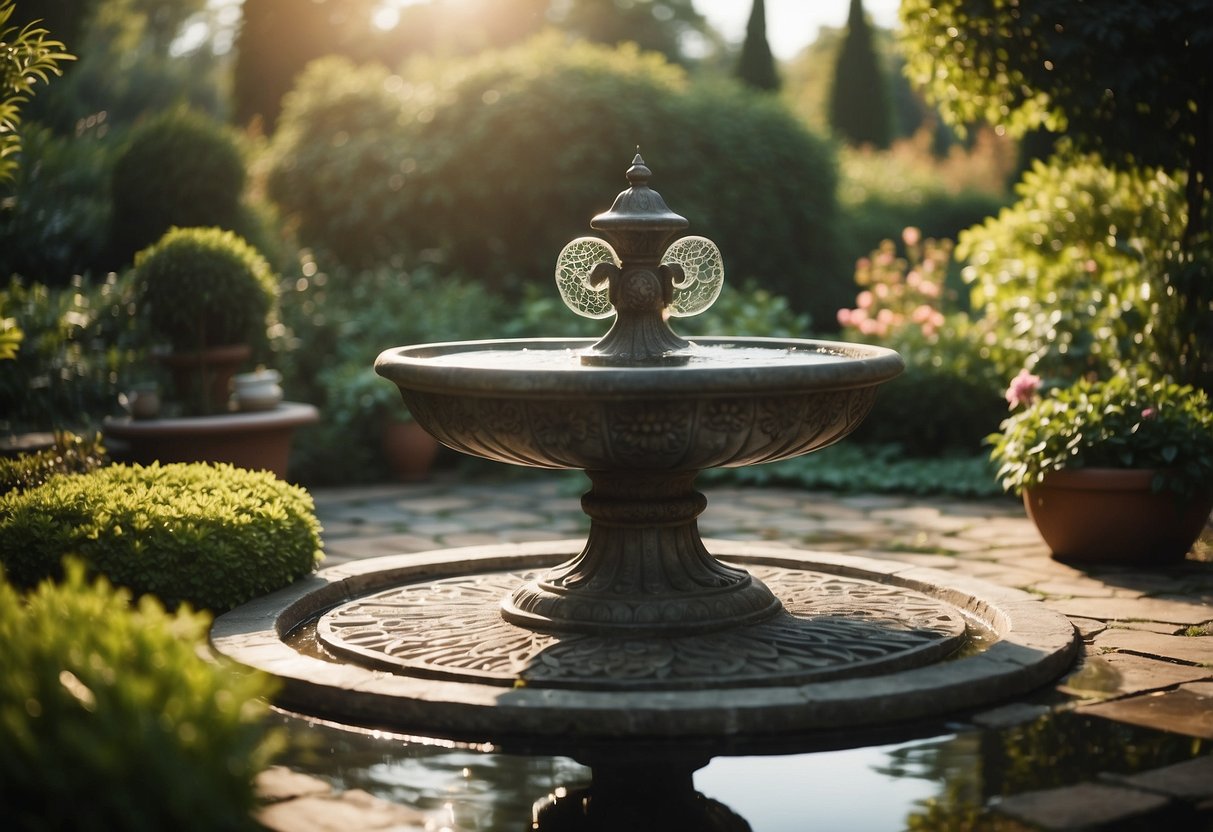
A central bird bath can be a charming addition to your circle garden. It not only attracts birds but also acts as a focal point.
Choose a bird bath with a unique design. You might like one with mosaic patterns or engraved decorations.
Place it at the center of your garden, surrounded by plants. This will make your garden feel more inviting and lively.
Benefits of Circle Garden Designs
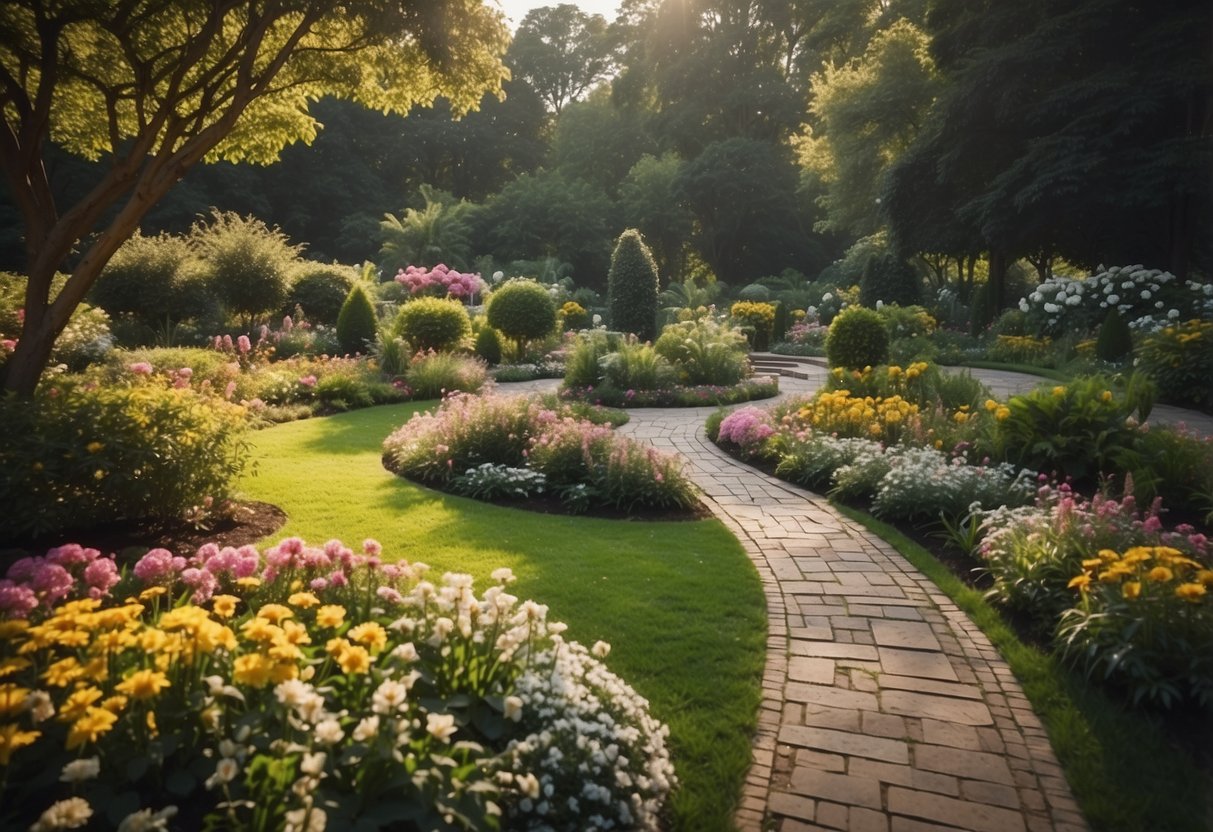
Circle garden designs can transform your outdoor space in unique and practical ways. Let’s look at how they provide a striking focal point, enhance aesthetic appeal, and optimize space usage.
Creating a Focal Point
A circle garden naturally draws the eye, making it a standout feature. Whether it’s a circular bed of colorful flowers or a circle of neatly arranged vegetables, the shape commands attention. By placing a prominent element like a water feature, a statue, or a seating area in the center, you create a visual anchor for your garden. This not only adds interest but also guides visitors through your garden, encouraging them to explore further.
Enhanced Aesthetic Appeal
Circles introduce a sense of harmony and balance. They’re pleasing to the eye and can soften the harsher lines of traditional garden designs. Incorporating curves and circles can make your garden feel more welcoming and natural. Mixing different plants, colors, and textures within a circular layout can create a cohesive and visually appealing space. For instance, using plants of different heights within a circular bed can add depth and dimension, making your garden more engaging.
Efficient Use of Space
Circle gardens can help you maximize your available space, especially in smaller yards. The design lets you utilize the area more efficiently by allowing for better plant spacing and easier access. Paths can radiate from the center, ensuring that you can reach every part of your garden without stepping on plants. This layout also promotes better light exposure and air circulation for your plants, leading to healthier growth. For those keen on sustainability, circle gardens can be adapted for different planting techniques, such as permaculture or companion planting, to further boost efficiency.
By integrating these benefits into your garden, you can create a space that is not only beautiful but also functional and sustainable.
Design Principles for Circle Gardens

Creating a well-designed circle garden involves focusing on symmetry and balance, selecting the right plants, and incorporating pathways and seating to enhance aesthetics and accessibility. Each aspect plays a crucial role in making your garden both beautiful and functional.
Symmetry and Balance
A circle garden naturally lends itself to symmetry. By placing identical or similar plants on opposite sides of your circle, you create harmony. This design principle also applies to other features such as pathways, water features, or stone arrangements. For example, placing two identical garden statues on either side of the circle creates a balanced look.
Mirrored Planting: Use the same types of plants at equal distances around the circle.
Central Focal Point: Add a focal point, such as a statue or fountain, in the center to draw attention and anchor the space.
Consistent Patterns: Repeating patterns or colors around the circle can also enhance symmetry and balance.
Choosing the Right Plants
Selecting the right plants for your circle garden depends on the climate, soil, and overall theme. Shade-loving plants like hostas work well in shaded areas. For sunny spots, consider vibrant flowers like marigolds or zinnias.
Diverse Heights: Mixing plant heights can create a dynamic look. Tall plants in the center, medium height plants next, and low-growing plants at the edge.
Seasonal Variety: Choose a mix of plants that bloom at different times of the year to keep your garden colorful all year round.
Local and Adaptable Plants: Picking native or well-adapted plants ensures they thrive with minimal maintenance and watering.
Incorporating Pathways and Seating
Pathways and seating areas make your circle garden more inviting and accessible. Paths can be made of gravel, stepping stones, or pavers, guiding visitors through the garden while protecting plants.
Pathway Design: Paths should be wide enough for comfortable walking and should connect to key features like the central focal point.
Seating Options: Include benches or garden chairs strategically placed for rest and enjoying different garden views.
Edge Softening: Allow plants to spill over the edges of paths and seating areas to create a seamless transition from the hardscape to the greenery.
Remember, the goal of a circle garden is to create a space that feels both inviting and harmonious.
Maintenance Tips for Circle Gardens

Maintaining a circle garden keeps it vibrant and healthy. Focus on regular pruning, soil care, and pest control to ensure your garden thrives.
Pruning and Trimming
Regular pruning and trimming help your plants grow strong and healthy. Cut back overgrown branches and remove any dead or damaged parts. This encourages new growth and prevents your garden from looking messy.
Trim flowering plants after they bloom to encourage more flowers. Use clean, sharp tools to avoid damaging the plants. Always prune in the early morning or late afternoon when the sun isn’t too strong.
Keep an eye on invasive species and remove them promptly. This will prevent them from taking nutrients from your other plants.
Soil Health and Fertilization
Healthy soil is crucial for a thriving garden. Start by testing your soil’s pH and nutrient levels. You can buy a soil test kit or send samples to a local extension service.
Add organic matter like compost or manure to improve soil structure and fertility. This helps retain moisture and provides essential nutrients to your plants. Mulch is also beneficial as it maintains soil temperature and reduces weed growth.
Use fertilizers sparingly. Too much can harm your plants. Opt for slow-release fertilizers that provide nutrients over time. Apply them according to the specific needs of your plants and soil conditions.
Pest Control Strategies
Pests can damage your garden if not managed properly. Start by identifying the pests causing problems. Knowing your enemy is the first step to effective control.
Use natural predators like ladybugs to keep harmful insects in check. Companion planting also helps; certain plants deter pests. For example, marigolds repel nematodes.
If you need to use chemical pesticides, choose ones safe for your plants and the environment. Apply them in the early morning or late evening to avoid harming beneficial insects. Regularly inspect your plants for signs of pests and act quickly to prevent infestations from spreading.
By following these tips, you can maintain a beautiful and healthy circle garden.







